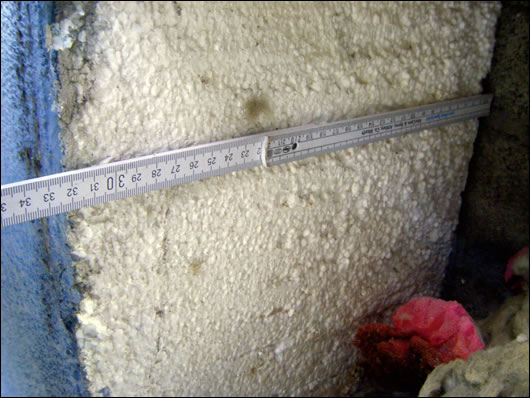- Passive Housing
- Posted
Passive assessment
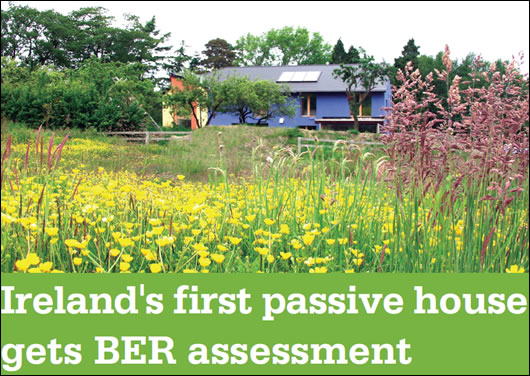
Built in 2004, Tomás O’Leary's house in Wicklow was the first in the country to be certified by the Passive House Institute — but how would it fare when subjected to a BER assessment six years later?
It's a surprise to many when they first hear that a certified passive house is not necessarily an A-rated house. That is, until it is explained that passive houses are assessed with the Passive House Planning Package (PHPP) and that Irish domestic BERs are calculated using the Dwelling Energy Assessment Procedure (Deap). These programs approach the energy usage in dwellings from different perspectives, and with different assumptions.
Although talk of passive houses is very current, they are a relatively new concept. The first certified passive house in Ireland was built by Tomás O’Leary of MosArt Architects in 2004.
Called Out of the Blue, at about 350m2 the house costs only a few hundred euro a year to run at a very comfortable level, mainly for the pellets and power to the pellet stove, circulation pumps and the heat recovery ventilation.
Out of the Blue is neither for sale nor rent, and therefore is not required to have a BER. However, as it has a high profile and is often used for passive house tours and studies, O'Leary decided to have a BER assessment undertaken out of curiosity — particularly in light of other cases where the BER rating of a passive house may have been disappointing, as with the pair of Botanic Homes certified passive houses featured in Construct Ireland in 2008 (Passive Attack, volume 4, issue 2), which scored B2 BERs.
To ensure the assessment was undertaken impartially and according to SEAI rules, the dwelling was not assessed using the in-house expertise at MosArt, but by the author, who runs an independent energy consultancy.
Whereas BER calculations for passive houses are typical on new builds, this house is classified as an existing dwelling and is therefore subject to further rules, as per Appendix S of the Deap rules.
Quite often when undertaking a BER for an existing dwelling, the required details are not available to a satisfactory standard or parts of the building are inaccessible for inspection. In some cases in existing houses, where the assessor gains access to what appears to be sufficient proof for a better-than-default, they may then discover that supplementary documentation is also required along with validated test data from properly accredited test centres – and all in English. This can be hard to come by, particularly for many of the low energy technologies from continental Europe.
In these circumstances, the BER assessor must use default values for the items in question. These default values are supplied by SEAI, mostly in the help files of the Deap calculation system, and occasionally they are to be found in supplementary bulletins sent to assessors by SEAI.
These default values allow rating calculations to be completed reasonably quickly, and for the certificate to be issued on the same day. In most cases the default figures are realistic, if conservative –in other words it would be better to have the true value for the specific item than use the default, as the default will serve to lower the energy rating that's possible for the dwelling. Thus for Out of the Blue, where so much of the build specification went far beyond other houses in its age bracket, it proved doubly important to chase as much of the required information and certified data as possible.
What this also meant was that rather than complete the BER in one day, it took almost three months to issue the certificate. In the end, the published rating for Out of the Blue is A3 – very respectable for an existing house, but is it good enough for a certified passive house?
The detail is in the default
The main issues in this BER assessment came down to trying to avoid the default assumptions in Deap, principally those for the fabric and the heating system, by fastidiously gathering the required information for all aspects of the build to the standard required by SEAI.
The table below shows where the default values versus actual values came into play, in the order that a BER assessor would encounter them in an assessment. The best case scenario shows how the rating would differ if all required certificates and documentary proofs had been available, or if the rules on data allowable had been even a little laxer.
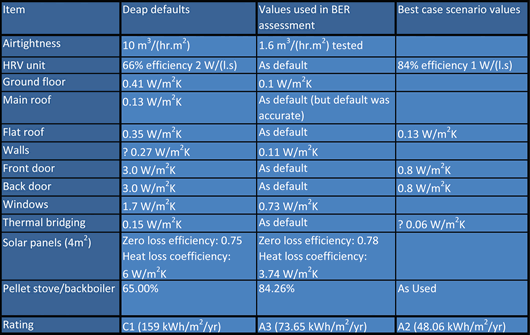
Airtightness
Many readers will be surprised at the airtightness figure of 1.6m3/hr/m2. On the one hand, this is the q50 figure – not the n50 required by the passive house calculation. The n50 came in for this test at a fraction over 1 ACH — but on the other hand, this is still outside the Passive House Institute requirements for a new house.
Two things have conspired to produce the situation. On one hand some extra work has been done in the intervening years to the house, resulting in new leaks appearing which were very difficult to seal properly after the work was completed, a situation that O'Leary laments. On the other hand, some leaks were detected with window seals, which have since been rectified, although the house has not been retested. However it still must certainly be in the top 1% of houses in Ireland in terms of airtightness, and this helps it reach its A3 rating.
Ventilation system
The unit installed in Out of the Blue is a high end Paul HRV unit. The installers, Pure Renewable Energy in New Ross, helped us source certificates – the unit has certs from the Passive House Institute and an independent accredited laboratory in Germany. However the unit was never added to the SAP Appendix Q database, nor were the accredited test details available in English, and thus Deap defaults had to be used.
Insulation
In an existing house, if the BER assessor cannot gain access to either the insulation itself, or sufficient documentation to prove a certain level of insulation, then default values must be taken. In the case of Out of the Blue there were plenty of photographs of the construction and invoice documentation to allow for the exceptional U-values to be entered. There was also access to one area of the walls to validate the insulation thickness, and access was easy to the attic for verification.
But we regretfully had to use a default value for the flat roof area. Despite what O'Leary was able to tell us, and the notes in the house plans, there were no supporting photographs, documentation specifically for that area or access to the insulation in that section of the roof.
If access and documented proof had not been possible for the walls and floor, it is interesting to wonder what default U-value could have been chosen. The walls, at over 400mm thick, do not fit easily into any of the standard default categories. For the sake of the illustration here, we have taken a U-value of 0.27 W/m2K, which no-one could really argue with, even if the defaults given in the Deap program were 0.55 W/m2K for this age of house.
Thermal bridging
The Passive House Institute is rather more relaxed about this than Deap. For the institute, if there is no doubt that the thermal bridging factor in the house is below 0.01 W/mK (based on external dimensions), then one does not strictly speaking need to calculate it. Thus, given the immensely robust details in Out of the Blue, O'Leary felt it was not necessary to undertake detailed thermal bridge calculations.
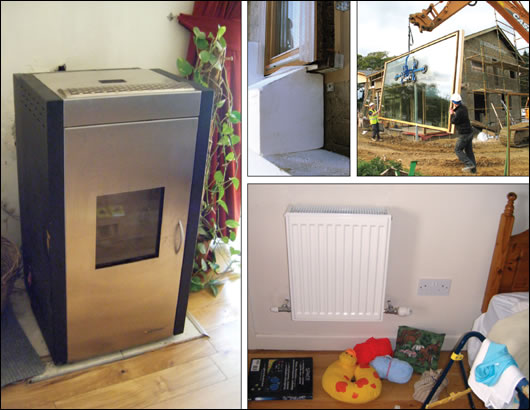
(clockwise left to right) Some airtightness leaks were found around window seals but these have been rectified; the immense Optiwin windows are a principal feature of the house; a number of small radiators can heat the house if required; with the heat supplied by a Calimax wood pellet stove with a back boiler
Deap, however, requires the calculation to be undertaken. If not, a blanket additional U-value figure is added to the heat loss elements of the house. For a house of this age, that figure is 0.15 W/m2K – thus for example, the excellent walls with a U-value of 0.11 W/m2K are actually treated in the Deap calculation as 0.26 W/m2K.
As this BER was purely a voluntary, informational exercise, O'Leary decided to not go to the expense of having the thermal bridge calculations done for the house. Thus the default value was used. However, this thermal bridging factor is probably the single biggest game-changer in the calculation.
For the sake of the comparison, we have taken a very conservative best case scenario thermal bridging factor in Deap of 0.06 W/m2K. We are of no doubt that were the calculations undertaken, this figure would be lower still and the house could legitimately sit in the A2 rating category, or very close to it.
Windows & Doors
The immense Optiwin windows are a principal feature of the house. Jarlath Lennon in Optiwin Ireland was a big help in sourcing all manner of certificates from the Optiwin company in Austria — the required certified data and calculations were made available for the windows, and in English. However specific certified, translated data was not available for the doors, even though also part of the same range, and thus default data was used.
Heating Systems
One of the main ways in which passive houses suffer in the Deap is due to the assumed heating system. To be considered a valid primary heating system in Deap, the principal system must heat at least 30% of the house. In some passive houses this cannot be achieved, as u there may be no real central heater other than a direct acting (small) electrical element heating up the incoming air in the HRV system. It is not that passive houses cannot have central heating or radiators, just that they are often unnecessary.
In Out of the Blue however, there is a Calimax pellet stove with a back boiler. This back boiler heats a small number of rooms/bathrooms with radiators, if required. Quite inadvertently, these few radiators, along with the space heated directly by the stove means the proportion of the house heatable by the pellet boiler is over the 30% required by Deap, and so the stove can be entered as the principal heating system. Interestingly, one of the radiators was added after the house's construction in a north facing room that was at times a couple of degrees cooler than expected – this created one of the hard-to-fix air leaks.
Getting the relevant, certified, translated, accredited test data was in this case also an uphill struggle, but in the end the persistence of the staff at Greenheat, who supplied the unit, paid off with the required details being supplied by the manufacturer.
Finally, the controls in Out of the Blue are not zoned – as per most passive houses the whole house is one zone of even temperature. There is a timer for the pellet stove heating, but this serves more to ensure there is sufficient hot water for morning showers in winter – the house itself is warm all the time. Thus the house does not gain the efficiency bonus points that Deap attributes to well zoned, timed and controlled heating. But then again, where standard houses certainly derive benefit from such controls, Out of the Blue would not.
What does this mean for the BER?
As stated in the introduction, a BER for many existing houses can be completed in a day by an assessor through the use of the default data.
For Out of the Blue, a BER could have been completed for the house and a rating in the Cs or Bs could easily have been issued within the day, or within the week at the most. However, few assessors are so busy that they can't spend some time to investigate items – but three months to complete a BER?
The lesson is that BER assessors must make it clear in advance to clients whose houses are in any way non-standard (particularly if better than average) how much detail is required for the BER to be the most meaningful it can be, and what certificates or proofs will be needed — or else the BER will suffer from the use of default data.
The use of much non-default data also flags an assessment as a special case, and no doubt this assessor will be required by SEAI at some stage to submit some of the supplementary documentation that was so carefully collected for this house. We hope, and expect, that it will withstand the audit.
The accumulated results of all the BER ratings undertaken are helping to inform decision making regarding energy use in this country, which is a very positive and worthwhile step. While there are very few houses where the difference between the actual BER, the 'fully default' BER and the best case scenario BER would differ as much as they do here, there remains a very pertinent question: What would be the effect on interpretations of overall rates of energy consumption and carbon emissions, if the rules for BER data collection were changed to allow for a wider range of traceable non-default values?
Related items
-
 New Ejot profile cuts thermal bridging losses by 25mm insulation equivalent
New Ejot profile cuts thermal bridging losses by 25mm insulation equivalent -
 Ireland’s first 3D printed homes insulated with clay foam
Ireland’s first 3D printed homes insulated with clay foam -
 Key industry events at Energy Show 2024
Key industry events at Energy Show 2024 -
An Post takes top prize at Energy Awards
-
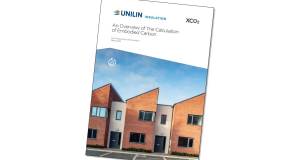 Unilin Ireland launches embodied carbon report
Unilin Ireland launches embodied carbon report -
Government supported almost 27,200 home energy upgrades through SEAI in 2022
-
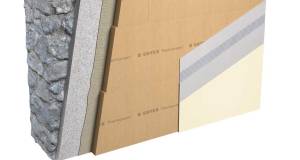 Ecological launches Retro EcoWall for internal wall insulation
Ecological launches Retro EcoWall for internal wall insulation -
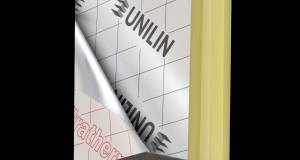 Xtratherm name changes to Unilin
Xtratherm name changes to Unilin -
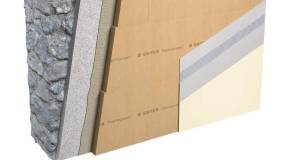 Ecological Building Systems launch Retro EcoWall for internal wall insulation
Ecological Building Systems launch Retro EcoWall for internal wall insulation -
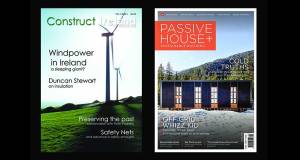 Podcast: what we've learned from 20 years in green building mags
Podcast: what we've learned from 20 years in green building mags -
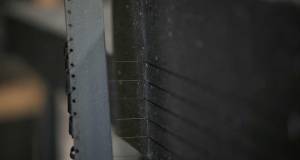 Kore launches low carbon EPS
Kore launches low carbon EPS -
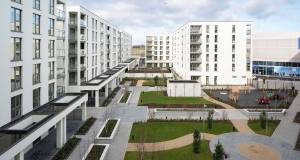 Kilsaran gets NSAI cert for EWI to steel frame
Kilsaran gets NSAI cert for EWI to steel frame


